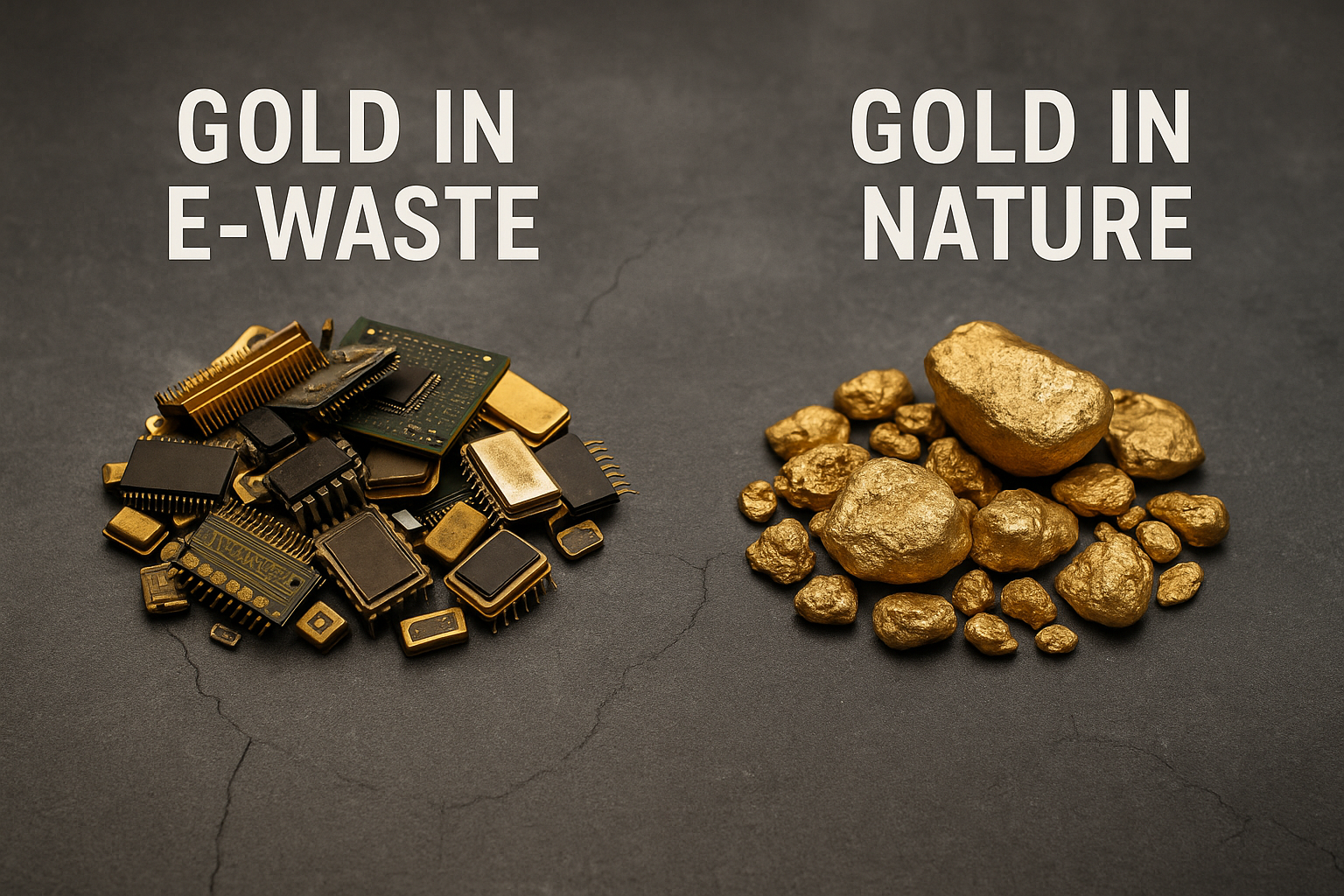Gold in e-Waste vs. Gold in Nature: Why Urban Mining Matters
Introduction
Electronic waste (e-waste) is one of the fastest-growing waste streams in the world. Old computers, smartphones, and circuit boards may look like junk, but they contain a surprising treasure: gold. In fact, studies show that e-waste contains far higher concentrations of gold than natural ores. This has made e-waste recycling – often called urban mining – a crucial part of the future of sustainable resource management.
How Much Gold in e-Waste?
Research indicates that e-waste can contain between 10 and 10,000 grams of gold per ton, while natural gold ores typically contain only 0.5 to 13.5 grams per ton ScienceDirect.
To put this into perspective:
- One ton of printed circuit boards can contain as much gold as 40–800 tons of natural ore Okon Recycling.
- Cornell University reports that a ton of e-waste holds at least 10 times more gold than mined ore Cornell News.
Clearly, e-waste is not just waste – it is a highly concentrated source of precious metalsIf you want to see real examples of components rich in gold, check out our collection of vintage CPUs.
Gold in Nature: Scarce and Hard to Extract
Natural gold deposits are becoming increasingly difficult and expensive to mine.
- Typical ores contain 5–30 grams of gold per ton, far less than e-waste ScienceDirect.
- Extracting gold from ore requires enormous amounts of energy, water, and often toxic chemicals like cyanide.
In contrast, recycling electronic components requires less mining activity and can recover gold more efficiently.
Why e-Waste is a Richer Resource
There are three main reasons why e-waste is “richer” than natural ores:
- Concentration – Electronics use gold in connectors, pins, and microchips. These are small parts, but the density of gold is much higher compared to natural rock.
- Accessibility – Unlike ore, which is dispersed underground, e-waste is already collected in urban areas, ready for processing.
- Technology – Modern recovery methods (hydrometallurgy, thiosulfate leaching, and eco-friendly processes) allow safe extraction without excessive environmental harm.
For collectors, this makes CPUs and other vintage chips not just fascinating artifacts, but also valuable resources. Learn more in our guide on CPU gold recovery
Real-World Example: The Royal Mint
The Royal Mint in the UK has invested in advanced recycling technologies to recover gold from circuit boards. Their facility can process up to 4,000 tons of e-waste annually, producing:
- 0.5 tons of gold
- 1,000 tons of copper
- 2.5 tons of silver
- 50 kg of palladium
(Financial Times).
This shows that e-waste is not just a recycling challenge but a real industrial opportunity.
The Future of Gold Recovery
As demand for electronics grows, so does the mountain of discarded devices. Urban mining will play a vital role in meeting the world’s gold demand without further exhausting natural resources. Future innovations – including bioleaching with microbes and greener chemical alternatives promise safer and more sustainable recovery methods.
Conclusion
When comparing gold in e-waste to gold in nature, the numbers speak for themselves: e-waste is far richer, easier to process, and more sustainable to recycle. For collectors, recyclers, and technologists, this makes e-waste not just a problem but a valuable resource.
For example, vintage CPUs are among the best sources of gold in electronic scrap, both for collectors and recyclers. You can explore rare examples of these chips at cpuvintage.com.
